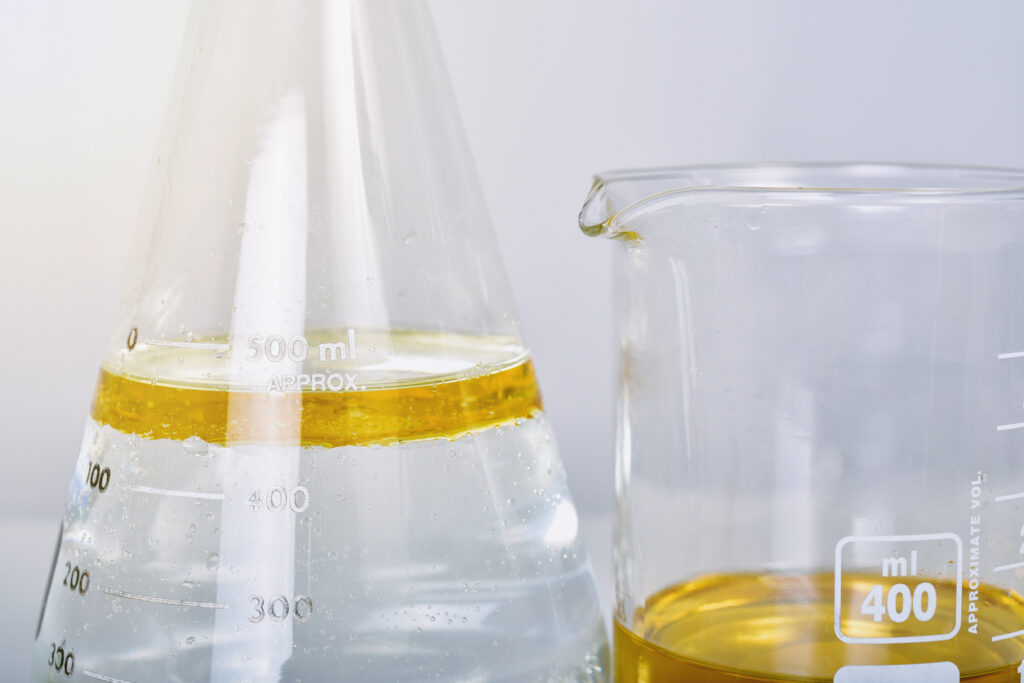Enhance Your Product with Heated Blending Capabilities
Blending liquids together is essential to their composition and function. Adding heat to the blending process may improve product quality by creating an environment where raw materials are more easily combined. The stress that cold blending puts on the liquid can cause additive dropout and separation.
Advantages of Warm Blending Liquids
Enhanced Mixing
Warm blending techniques can improve the homogeneity of liquid mixtures by reducing the viscosity and increasing molecular mobility. This results in better blending of ingredients, especially those that are temperature-sensitive or have high melting points. Better blending and homogeneity of a liquid leads to a more uniform distribution of components, resulting in a higher-quality product. These results are particularly true with petroleum blending.
Better Solubility and Dissolution
Higher temperatures make many substances more soluble or more ready to dissolve. Applying increased temperatures to certain solutions provides the needed energy to break certain bonds, making the substance more easily dissolvable. Warm blending liquids can promote the dissolution of ingredients, such as powders, solids, or viscous substances, resulting in a more uniform solution or mixture. This can be particularly advantageous when working with ingredients that have poor solubility or tend to form lumps or aggregates when trying to dissolve at lower temperatures.
Greater Emulsification
Using warm blending techniques can aid in the formation of stable emulsions, where two immiscible liquids are combined to form a stable mixture. The increase in temperature can reduce the viscosity of the liquids and enhance the efficiency of emulsifiers, resulting in finer, more stable emulsions. This is particularly important in industries where emulsions play a significant role in formulations.
Chemical Reactions
Elevated temperatures are required for optimal performance of certain chemical reactions, such as polymerization or cross-linking. Warm blending liquids can provide the necessary conditions for these reactions, leading to improved product quality. Temperature control during blending can also help prevent unwanted side reactions or degradation of sensitive compounds.
Is Warm Blending Liquids Right for You?
It is important to note that warm blending processes may not be suitable for all products or applications. Certain substances can be sensitive to high temperatures and may degrade, lose, or alter their properties when exposed to heat. In such cases, room temperature blending may be more appropriate.
Work with Crystal Packaging for Warm Blending of Liquids
At Crystal Packaging, we recognize how important warm blending can be for certain applications and industries, and we are happy to be able to provide our clients with top-notch techniques. Our capabilities expand into many different industries, including automotive and aviation chemicals, cleaning products, fire retardant fluid, lubricant blending, and specialty chemicals.
Founded in 1977, we have decades of experience blending liquids for our clients. Today, we are the foremost specialty chemical and petroleum contract packager and private label manufacturer in the Rocky Mountain region. Our 70,000-square-foot facility features multiple blend tanks and more than two million gallons of storage, meaning we can take on even the largest projects. We also maintain a range of industry certifications that hold us to the highest standards in manufacturing excellence. These include GMP, ECOCERT, and Safer Choice Standard accreditations. We also hold an EPA registration for the production of disinfectants.
Reach out to our team of experts to learn more about our blending capabilities.

